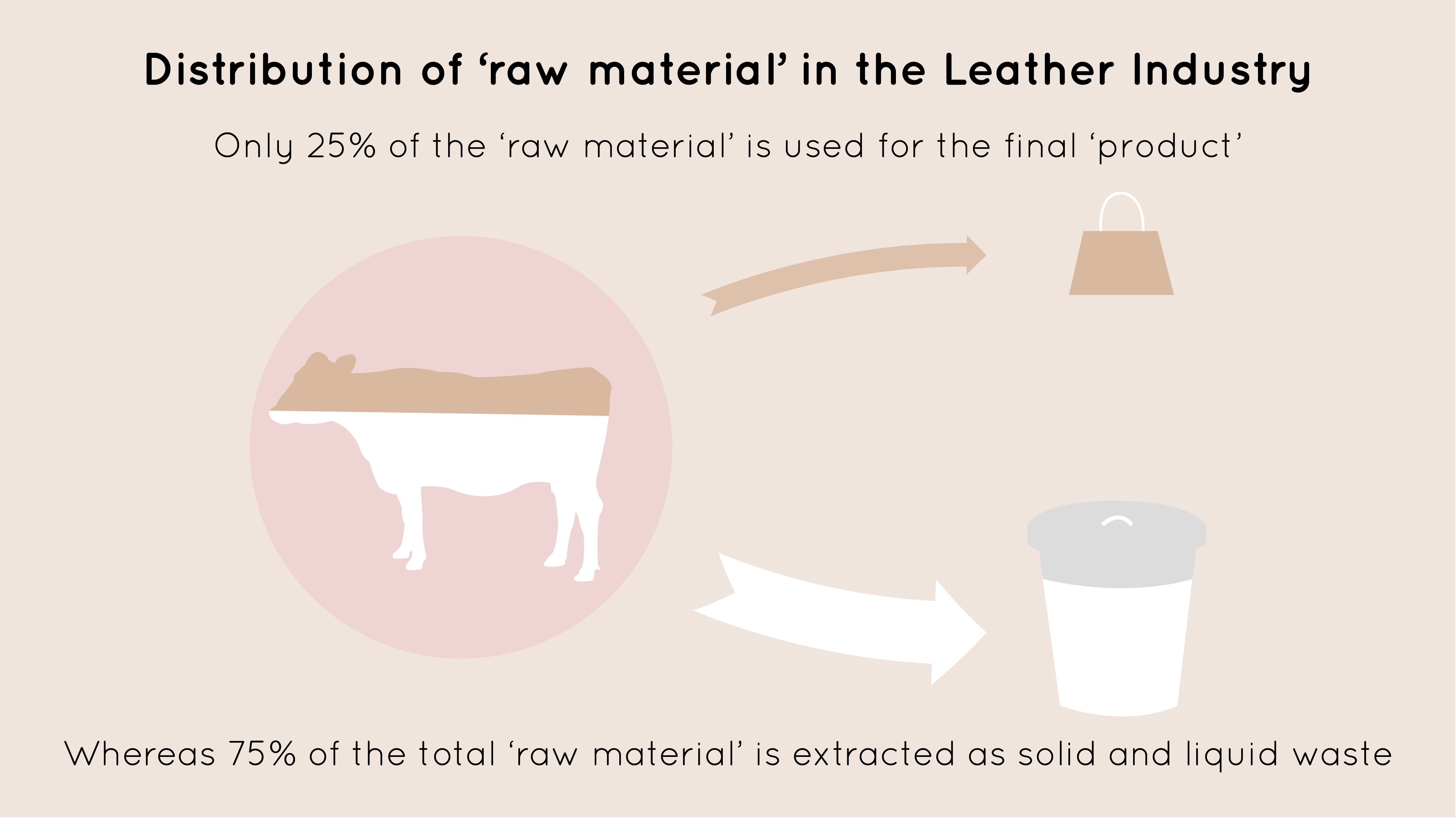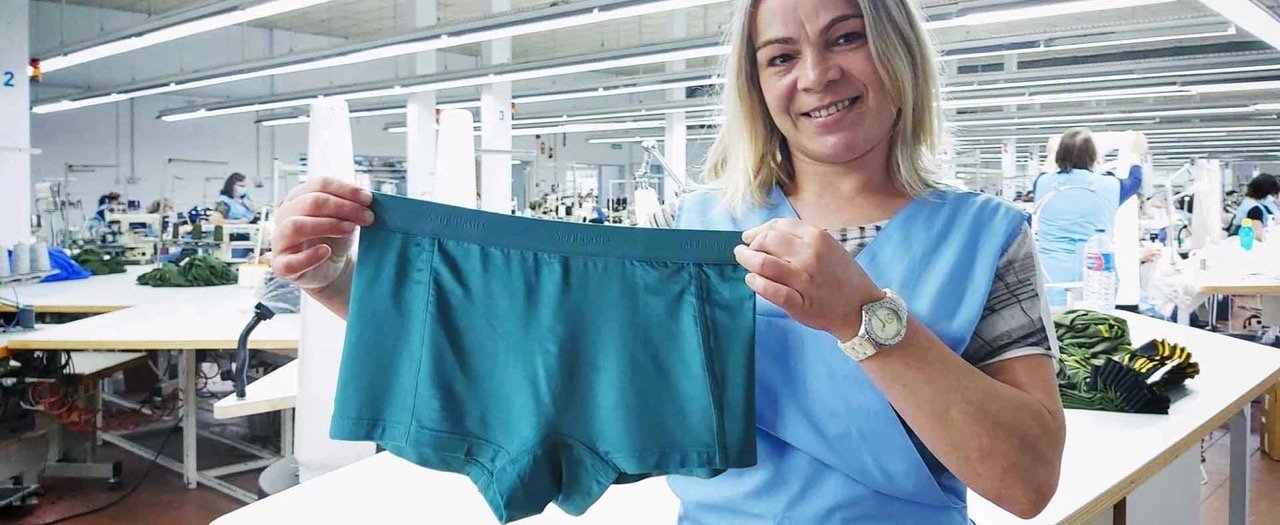 Vegan, fair & sustainable shopping in The United Kingdom 4.8
Vegan, fair & sustainable shopping in The United Kingdom 4.8 



 Check out reviews
Check out reviewsWhat's Wrong with Leather?
 Coralie & Ineke
Coralie & Ineke

What is leather? How is it cruel, you may be asking? The short answer is that the snazzy biker look you like has a dark past. At the end of the day, leather is the skin of a once living animal. The human need to be fashionable and fit in with trends has meant that innocent animals, but also people and our earth suffer.
For the animals, people and the planet, your leather jacket carries with it a rather brutal reality. Just because it might look innocent, it doesn’t mean it is. In the time it has taken you to read these first few sentences, worldwide 300 cows, 1.459 pigs, 1.178 rabbits and 61.490 chickens have been killed by the animal industry.1 And that fact is not all that scared the crap out of us.
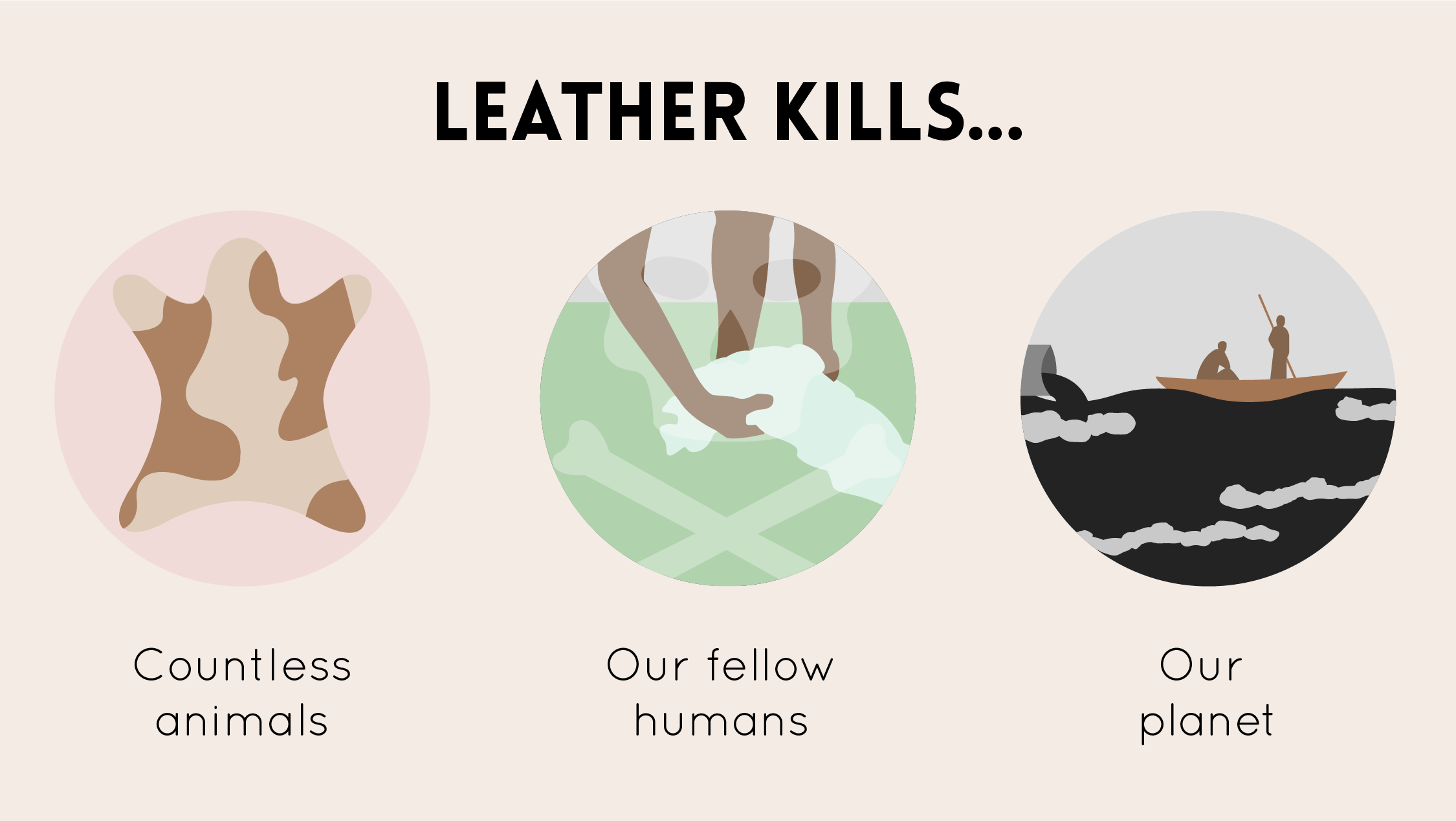
© Coralie Boon - @thula_art.
Leather is something that we have largely come to accept as a fact of life. We see it everywhere; on belts, bags, cars and even furniture. In marketplaces today, leather is often deceptively labelled ‘eco-friendly’, in the use of a byproduct.
But its manufacturing is in itself energy intensive, inefficient and involves the use of harsh chemicals without even considering the damaging, unethical animal agricultural process from which it emerges.
In this article:
- Simple fact: you can’t wear leather without an animal''s death.
- But making leather isn''t just deadly to animals; the leather industry is killing our fellow humans and our planet too.
- Did you know that you might even be wearing dog or cat skin?
- We don’t ''make'' leather the way we used to on a much smaller scale, it’s now far worse.
- And no, leather is not just a by-product of the meat and dairy industry.
- Rivers of chemicals are unpredictable and kill everything in their wake.
- Luckily, there are plenty of kinder alternatives and it''s possible to live truly fashionably without (animal) leather.
The sources that were used to write this article can be found at the bottom of this page.
A Quick Summary:
Leather kills people:
A chemical Pandora’s box
The use of chemicals is extreme and unregulated in leather tanning. To prevent the decomposition of skin, aggressive chemicals like chromium are used to preserve it and make it unrecognizable from its origins.
These chemicals flow largely untreated around tanneries. This creates a combination of reactions that are incredibly damaging to the human bodies working there and the surrounding environment. Early deaths from cancer and skin diseases and dramatic skin bleaching are very real consequences.
Find out more about the poisonous chemicals used in leather.
Leather kills animals:
Wearing skin?
By means of scraping the skin clean of hair, fat and flesh – as gross as it sounds – ‘tanning’ is essentially the process of preserving animal skin by applying harsh chemical pastes and acids. Not a way we usually think of animals right?
The leather industry is an important cog in the machine of animal cruelty. Animals are born, fed, impregnated, drugged, their babies torn away from them and killed in a lifetime cut unnaturally short... All for humans to wear their skin and eat their flesh.
Leather often doesn’t look like the skin of an innocent animal anymore. We contribute to this disconnection from the natural world by trying to hide the often horrific reality of what actually happens behind closed doors.
But there is no need for this cruelty and there are fantastic animal-free leather alternatives on the market now that are practically identical.
Find out more about what leather means for animals »
In his recent Oscar acceptance speech, Joaquin Phoenix reflected on how we have become disconnected from the natural world and how our egocentric worldview makes us feel entitled to the ‘products’ that animals can provide us. In this world, he spotlights the need for us to be a voice for (what he calls) the voiceless.
Continue reading the article below this video.
Leather kills our planet:
Sludge of toxic skin, mold and flesh
A constant river of tannery waste flows through areas of high leather exports. Alongside toxic chemical flows, the offcuts of the processed animal skin block the area''s waterways and the stench of rotting flesh can be smelled consistently throughout the nearby homes.
Not only this, but industrial-scale animal agriculture releases enormous amounts of methane gas per animal, contributing to greenhouse gas emissions to an even higher degree than fracking.
Additionally, the amounts of food and water that are used throughout the years to raise the animals could be otherwise re-directed to people in efforts to combat world hunger.
But this is just a snapshot of how bad leather can be. In this article, we’ll delve into the realities of leather manufacturing and what it truly means for the animals, the planet and the humans involved.
Find out more about how leather harms our environment.
The Ethics of Leather? There Are None.
From every angle - the animal, the human and the environment - leather production invisibly exploits and takes advantage. What we cannot see does not happen, or so the saying goes. Leather, amongst other modern industries by its very nature as a capitalistic enterprise, is always looking for the shortcut.
Humans enslave, mass-farm and kill animals for efficiency and profit. Leather businesses in the Western world benefit from weak labour laws and take advantage of being able to employ cheap labour in the East. Low pay, low safety standards and child labour are oftentimes completely invisible in the leather industry
Most extensive of all perhaps is the player that can’t protest, raise a voice or fight at all, our planet. By means of exploitation, inequality and blindness, the leather industry profits from an unethical system at every angle.
With this article we are going to shine a harsh spotlight on the cruelty behind leather and prove that it’s completely avoidable in the 21st century. As Phoenix reflects on in his speech, in terms of change:
"We fear the idea of change because we think we have to sacrifice something or give something up, but human beings at our best are so inventive, creative and ingenious."
We can do much better and ethical answers are beginning to soar, we just need to increase awareness of what making a product like leather truly means.
Leather is Poisonous to People
Yes, leather is straight up toxic. In the process of scraping and drying animal skin, modern leather production has introduced the use of metal salts to massively speed up a process that historically took months, to just a few days.
Cancerous chemicals
Of these chemicals, chromium and arsenic are both classed as a group 1 carcinogen.2,24 By working in close proximity to these chemicals, those employed in the tanning industry are exposed to a massively increased chance of developing cancer.
Overall cancer rates of tannery workers are far higher than normal levels. For instance, leukaemia can occur up to 5 times as often if you live near a tannery.3,4
So without even acknowledging factors of severe animal cruelty and destruction of the physical environment (more on this later), the process of tanning leather itself has a profound human health impact. Both on those who are directly involved in its production but also those who might unconsciously reside nearby.
In an industry that employs nearly half a million people in the EU alone, the human cost in the toxicity of leather is not something to be overlooked.5
But these statistics aren''t even from the areas where the majority of tanneries are located. With far less stringent health and safety regulations from the government, countries like Bangladesh see the human burdens of the leather industry on a far more extreme level.
Continue reading the article below this image.
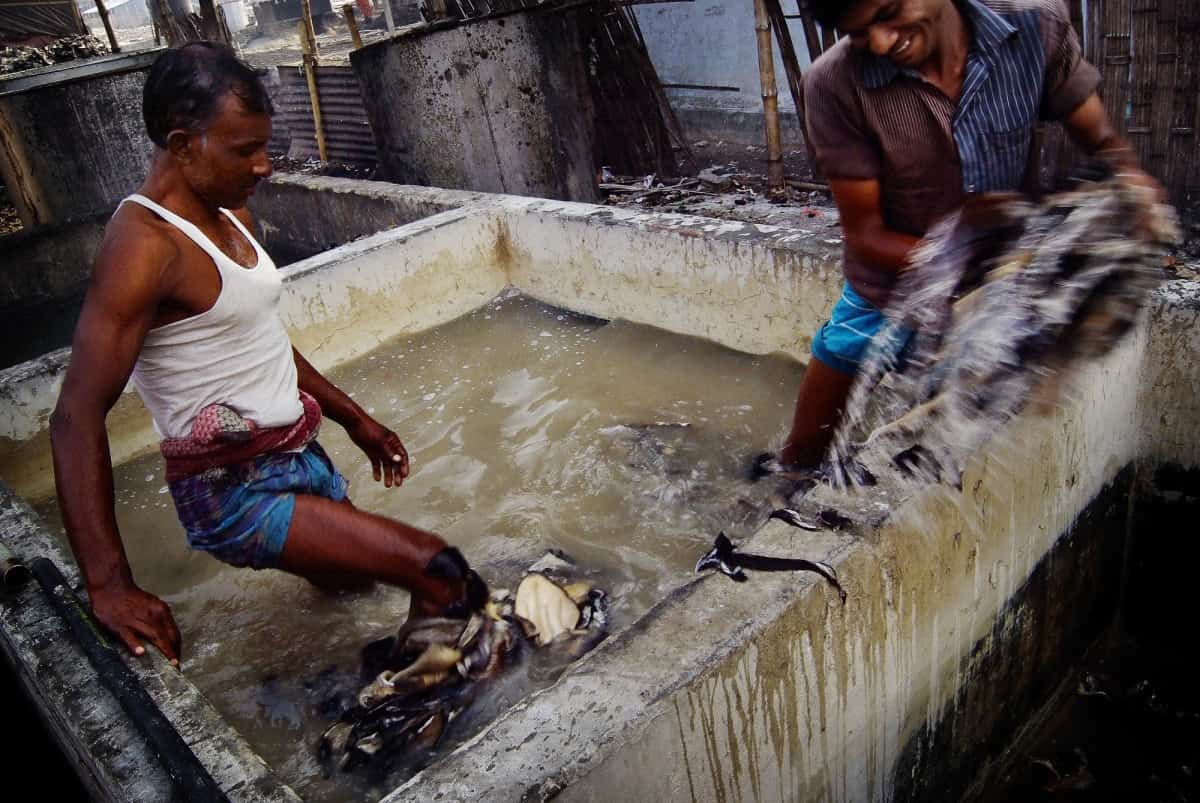
© 2020 Daniel Lanteigne.
Hazaribagh: Hell on Earth
With nearly 200 tanneries, the Dhaka district of Hazaribagh is one of the most polluted urban areas in the world. Locals experience smells so foul that they induce constant nausea and vomiting.
According to the Human Rights Watch, skin diseases, respiratory and stomach problems are widespread within the local community because of the lack of waste treatment facilities as well as the lack of gloves and safety equipment for handling chemicals.
Tanneries are so prevalent and in such dire conditions throughout Dhaka that most of those who work there will die before they reach 50.6
Mass industry destroys at a massive rate
A commonly heard response to the arguments against leather, similar to those made against veganism, is that leather, like eating meat, has been present in human society for an incredibly long time. To that, I respond that yes, animals have been a part of human civilization for as long as time, but killing has always been killing and today it is unprecedented.
In our 21st century lives, technological developments turned the use of animals into a massive global industry. An industry that has fostered a business based on the rearing and eventual slaughter of animals – on a scale unparalleled throughout human history. Yet, it is simply unnecessary.
According to the Food and Agriculture Organization of the United Nations, global animal slaughter numbers have increased from just under 10 billion in 1960 to 80 billion in 2021.7
This dramatic surge in animal slaughter numbers is just the tail end of a figure that has been growing exponentially with industrialisation and the ability to farm animals on an astonishing scale.
So, despite the killing of animals for human material use and consumption has always existed, with references to leather tanning in early Assyrian texts and Homer’s Iliad8, the 21st century has taken something objectively grim and transformed it into numbers difficult to comprehend.
Without a doubt, leather production and its effects prior to mechanisation are incomparable to the extremes the industry has embraced now.
Continue reading the article below this image.
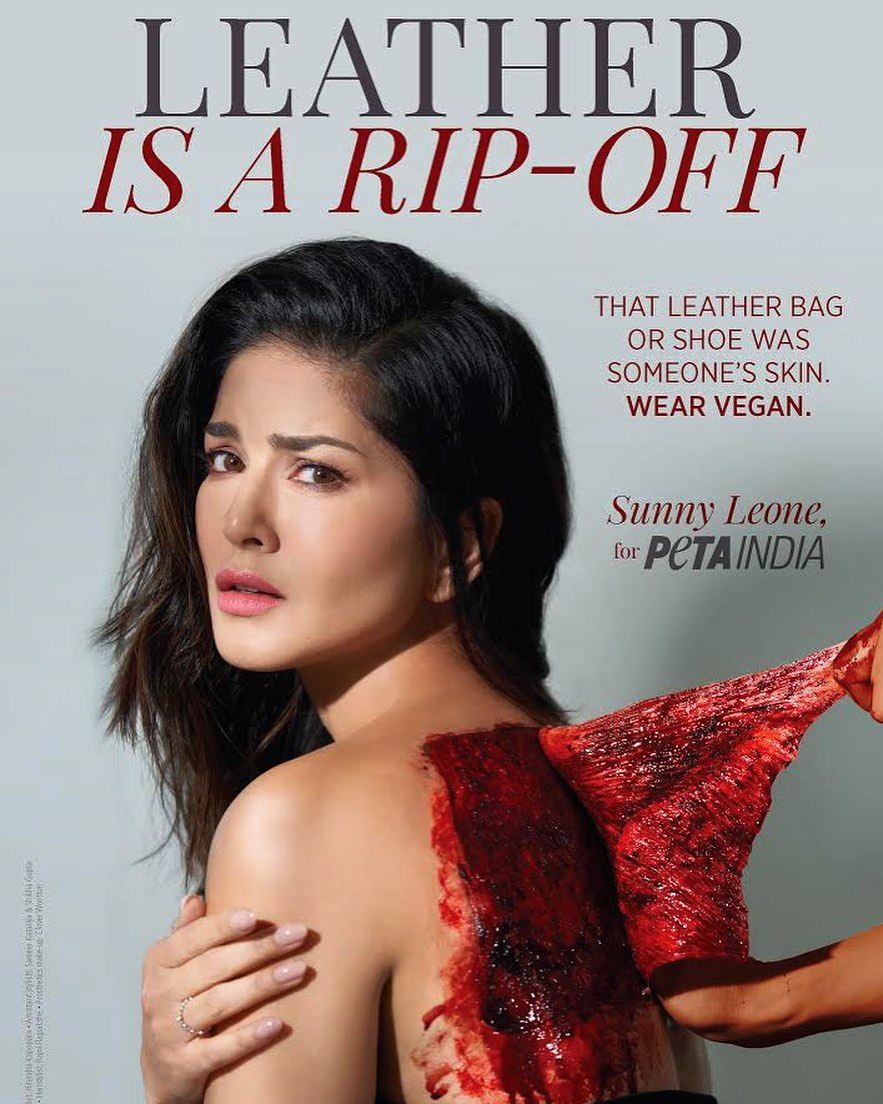
Sunny Leone for a PETAIndia campaign.
Faster than ever before
Due to modern technology and the discovery of metal salts (to aid the process of tanning) in the mid 20th century the production time of leather decreased from up to a year to a period of just a couple of days.
With this new and improved process combined with the scale of animal agriculture, leather manufacturing emerges in the 21st century as an economically viable option. But all is not as it seems.
The new methods of production and efficiency have only meant more and more deaths. It is now both easier to factory farm, breed and slaughter en masse, but also come to an end product of leather far far faster.
21st century animal agriculture and fast fashion have allowed cruelty towards animals to occur at a rate and severity beyond anything previously understood – despite it being unnecessary.
Again, not only animals have suffered under the mass industry boom of animal agriculture. Countries like Bangladesh and India have benefited from outsourced labour as the industry has grown, with leather becoming a significant part of their exports.
But this industrialisation comes with its own challenges. With an increase in labour and focus on profit, health and safety standards have fallen with dire consequences like those detailed above. It’s all intertwined.
Skin is valuable - not simply a by-Product
It is also important to recognise the economic factors involved in the production of leather. Yes, leather is largely produced in cooperation with the meat and dairy industry and can sometimes be misconstrued as a byproduct.
But it is less motivated by a drive to reduce waste rather than to maximize profit.
The skin of an animal is approximated to 10%-20% of its total value.9 Therefore, the consumer demand creates a space for leather to be a product in its own right.
If you look at the small percentage that an animal''s skin represents in relation to the rest of the body and compare that to the price payoff, the outcome is obvious. Leather has in fact become the most economically valuable part of the animal. So, leather isn’t simply making use of a by-product.
Buying leather is not about being mindful of waste. It is about financially contributing to an economy in which the animals are killed for a product. If things don''t change, the global leather industry is set to reach a massive $128.61 billion USD by 2022.10
Continue reading the article below this image.
© Coralie Boon - @thula_art.
Animals: The First Victims
An estimated 80 billion animals are slaughtered for human consumption each year.11 To put it differently, 124,000 farmed animals are slaughtered globally every minute. Disturbing, isn''t it?
As the saying goes, you can’t have your cake and eat it too: if you want animal leather, you have to end a life. If you want meat, you have to kill an animal. Or (indirectly) pay someone to do it for you.
As mentioned previously, the scale of animal slaughter has increased at an unprecedented rate throughout the past century due to the increasing demand for animal products. It’s hard to picture these numbers, the lives of factory-farmed animals can easily become meaningless when put into a graph.
Continue reading the article below this image.
© The Vegan Calculator. Click to see live version.
Even with these cruel and industrial lifestyles, the death of these animals is hardly more dignified with slaughter practices rife with carelessness, lack of proper prior stunning and weak animal protection laws.
While methods such as electric stunning and the bolt gun both produce a quick death, the commonly practised slitting of the throat results in a lot of animals experiencing a long, painful and drawn-out death.
This is especially true for the leather industry because the aim is to preserve as much of the skin as possible. So, stun guns or quick methods of death are not used, instead, animals are often skinned alive.
On top of this, the young are often separated from their mothers very early and killed for a softer and more tender leather. Not to mention, industrial farmed animals also undergo the brutal process of ownership branding or dehorning in their lifetimes.12
- Reading Tip: The Truth About Honey & Beeswax
- Reading Tip: Why Vegans Don''t Wear Wool
Cats and dogs: Don’t trust the label, it’s essentially meaningless
And yes, many of these animals are also killed for the meat and dairy industry. But it is also popular to produce leather from animals like snakes, cats and dogs, whose meat isn''t even largely wanted.
From the lack of traceability and rampant mislabelling that surrounds the leather industry, you might not even know if the leather belt you bought was made from the skin of a cat or a cow.
In countries that are home to the more exotic types of leather such as snake skin, elephant skin and zebra, illegal animal poaching has led to unregulated leather industry. Leather production associated with poaching is incredibly hard to detect from a consumer perspective due to rampant mislabelling or even lack thereof which contributes to the absence of transparency in the industry as a whole.13
What you might read as a trustworthy and local ‘Made In…’ label, probably means just ‘designed in’. This subtle loophole makes it even harder to trust the leather industry and track where and how far a certain product has travelled. Not to mention what animal cruelty standards and laws were actually met in its production.
Why is Leather Bad For the Environment?
Being directly linked to the meat and dairy industry, the production of leather is tied to mass animal agriculture and its profound impact on our planet.
Imagine this. Throughout her short life, an average cow (who could live to 20 to 25 years without human intervention, but whose life is cut short to about 5 to 7 years before she is sent to the slaughterhouse) is fed hundreds of thousands of litres of water and tens of thousands of kilos of cattle fodder. Valuable resources that are very inefficiently used in our current, unsustainable food chain.
On top of that, ruminants emit massive amounts of methane through belching and through flatulence (yep, cow burps and farts). Methane has a huge effect on the climate crisis too. It is a potent greenhouse gas that''s about 25 times more powerful than carbon dioxide at warming the Earth.
Water turns into a chemical melting pot
As mentioned before, chromium plays a large part in the modern process of tanning. It doesn''t only have an impact on a human level, but also on the surrounding environment.
More than 170,000 tons of incredibly carcinogenic chromium waste is released into the environment every single year.14
Continue reading the article below this image.

© Coralie Boon - @thula_art.
The leather industry is responsible for a large amount of fluid waste that is often heavily concentrated with harsh metals like chromium. This toxic fluid waste runs into natural water systems which leads to the disruption of the local ecosystems and their organic condition.
Take the case of Kanpur in Pakistan, where each day, 50 million litres of wastewater from local tanneries flows into the surrounding farmland and the River Ganges. That’s the worth of around 20 Olympic sized swimming pools.
And only 20% of this water is treated. The devastating results are diseases for local residents and long term detrimental environmental impacts.
The problem isn''t only the fact that this wastewater is heavily concentrated with chemicals. Much of the water is also used in the process of scraping and de-fleshing the hide. As a consequence, tannery wastewater is often full of hair and bits of fleshy fat and mold which can lead to blocked waterways and contaminated freshwater systems.15
Hazaribagh, the tanning district of Dhaka I mentioned before, was named one of the 5 most polluted environments in the entire world. In an interview with Al Jazeera, Syeda Rizwana Hasan from the Bangladesh Environmental Lawyers Association stated:
"If you want to know how hell looks like ... come to the Hazaribagh tanneries and have a look at the tannery area, that should tell you perhaps how hell looks like."16
The amount and combination of chemical waste flowing out of these Dhaka tanneries are not even known, resulting in a sort of ‘pandora’s box’ of chemical reactions. The impacts of this mixture on both the people who come into contact with it and the local waterways are impossible to know. Imagine living there…
Continue reading the article below this image.

© 2020 Daniel Lanteigne.
Did you know that a single hide usually results in up to 500 bathtubs worth of wastewater? When looking at the entire lifecycle of leather, it is estimated that the total annual water consumption from cattle alone is 400 billion litres.
From beginning to end, animal agriculture in combination with the manufacturing of leather paints is an incredibly resource-intensive and chemically concentrated picture.17
Everything is tainted
But again, everything is interconnected. It is not just the animals directly killed in the process that are impacted by this industry, but also those indirectly impacted by the surrounding environment.
Wastewater released from the tanneries often ends up in natural waterways, drastically impacting marine life.
Eutrophication is one of the main consequences in bodies of water where the waste leads to an over-concentration of minerals in the water. This in turn creates an excess of algae which consumes all of the oxygen in the water and blocks out light, eventually killing any fish and various other marine life in that body of water.
This is even without acknowledging the impact of the chromium in the water that is ingested by fish, leading to physical abnormalities amongst their population.
Most of our land is used for animals
Animal agriculture on a global scale covers the planet, diverting a huge percentage of land to cattle grazing and the growing of crops to sustain these animals. However, the payoff is just over a quarter of the global caloric supply.
According to statistics from the FAO, nearly 80% of agricultural land is used for livestock.18 A lot of numbers, I know.
But that is a massive amount of land diverted towards animal grazing and the growing of grain – just to feed the 80+ billion animals a year that are raised for human consumption. A lot of animals whose diet could be otherwise re-directed to people in efforts to combat world hunger.
Continue reading the article below this image.
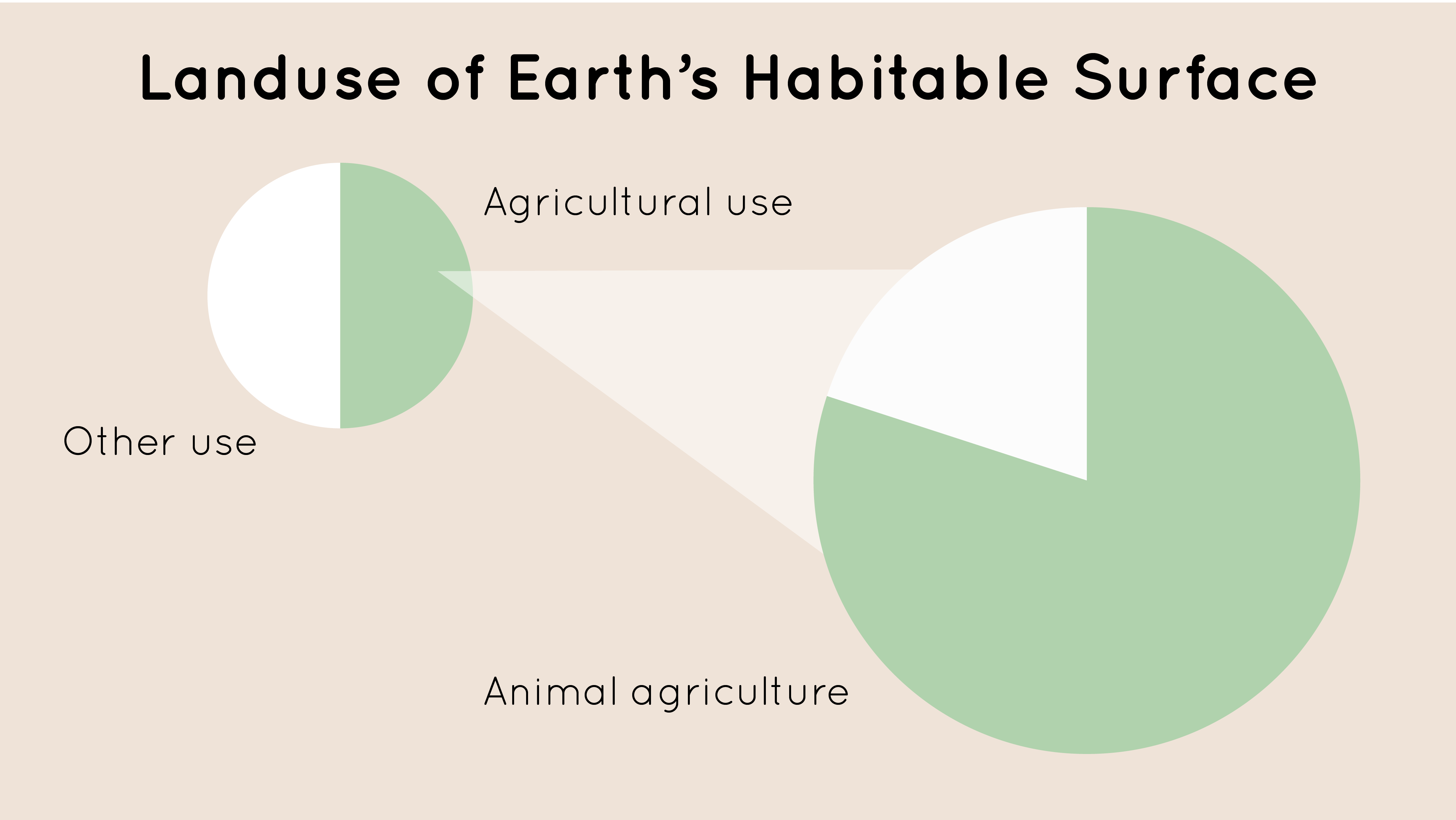
© Coralie Boon - @thula_art.
For instance, in the last 50 years alone, up to 70% of the Amazon Rainforest has been cleared for the production of largely soy-bean crops needed to feed the global animal farming industry.19
Next to destroying indigenous homelands, imagine the sheer quantity of grain produced for animals that reaches the human only as a secondary consumer. So no, it’s not soy for your soy cappuccino or tofu. It’s almost all for animal feed.
Imagine how much impact that grain and water could have if only it was used as a cheap primary product for human consumption…
And did you know that there is more grain produced to feed cattle that then feed humans than is grown to feed humans directly? A Cornell study suggests that the US could feed up to 800 million people with the grain it uses to feed its livestock.20
The resource consumption is thus far out of proportion with the yield in a global economy where animals are used as raw materials, not to mention contributing to the destruction of worldwide biodiversity and habitats.
The CO2 emissions are alarming
Looking at leather as an arm of the global animal agriculture industry, livestock itself is responsible for almost a quarter of human-caused greenhouse emissions.
Most of this is a result of methane that is released from the digestive processes of animals, a gas that is far more detrimental than carbon dioxide.
The majority of the CO2 emissions linked to leather production comes from the ‘raw materials’ of animal agriculture, but another factor specific to leather production emerges in travel.
Tanneries and slaughterhouses are largely located in South-East Asia. From there, the finished leather is flown to Western Europe and the USA for further manufacturing. A ‘Made in…’ stamp only has to refer to the latter part of the entire leather manufacturing process. And this process is responsible for a lot more air miles than one might think.
Many so-called EU leather manufacturers have delocalized production and outsourced to Asia. The General Secretary of the COTANCE EU Leather Industry states that they see no need to label their products with ‘Made in Bangladesh’.21
Outsourcing labour to areas like Dhaka, Bangladesh means outsourcing from places where governments are especially unwilling to transition to less energy-intensive and low-waste means of leather manufacturing.
This is due to the fact that increasing tax revenue surrounding their export, implementing new technologies and more stringent animal and human welfare within slaughterhouses and tanneries would simply mean disrupting an incredibly lucrative industry. An industry that brings in over $1 billion per year despite these methods being available.22
Solutions: Vegan Leather?
{{#product}}18256{{/product}}{{#product}}18201{{/product}}
{{#product}}19152{{/product}}{{#product}}18179{{/product}}
Despite all of this super overwhelming information, all hope is not lost. You can definitely still rock the head to toe biker look cruelty-free!
Innovative plant-based leather alternatives are now luckily available. Just think of materials like cork, kelp, mushrooms, recycled rubber, apple peel, pineapple fibre and even wine remnants being woven into malleable leather-like fabric.
Just this week, a new type of vegan leather (or fleather) made from Indian temple flowers has been announced!23
- Reading Tip: 6+ Sustainable Vegan Leather Alternatives
There are so many different leather alternatives on the market right now – all offering something different. Some resemble leather more than others, some are more sustainably made and some are significantly cheaper.
But most importantly, none of these exploits animals or humans like the traditional leather industry does. Ethical and sustainable solutions are coming, we just need to persevere and strive for truth and transparency surrounding the leather industry.
So, I’ll leave you with another quote from Joaquin Phoenix’s Oscar speech with some hope for our future:
“When we use love and compassion as our guiding principles, we can create, develop and implement systems of change that are beneficial to all sentient beings and the environment”.

Sources Used:
1. https://thevegancalculator.com
2. https://www.who.int/ipcs/features/arsenic.pdf
7. Nearly 70 billion in 2016: https://faunalytics.org; already 80 billion in 2021: https://www.fao.org/faostat/en/#data/QCL
9. https://www.onegreenplanet.org
10. https://www.businesswire.com
11. Nearly 70 billion in 2016: https://www.weforum.org; ; already 80 billion in 2021: https://www.fao.org/faostat/en/#data/QCL
13. https://www.onegreenplanet.org
14. https://www.sciencedirect.com
15. The Toxic Price of Leather
18. https://ourworldindata.org
19. https://www.greenpeace.org
21. https://www.huffingtonpost.co.uk
24. https://www.who.int/water_sanitation_health/water-quality/guidelines/chemicals/chromium.pdf
.jpg)
 T-Shirts & Tops
T-Shirts & Tops  Shirts & blouses
Shirts & blouses  Dresses
Dresses  Skirts
Skirts  Pants
Pants  Jeans
Jeans  Knitted sweaters & cardigans
Knitted sweaters & cardigans  Hoodies & sweatshirts
Hoodies & sweatshirts  Coats & jackets
Coats & jackets  Suits & co-ord sets
Suits & co-ord sets  Lingerie & underwear
Lingerie & underwear  Legwear
Legwear  Lounge & nightwear
Lounge & nightwear  Sportswear
Sportswear  Jumpsuits & dungarees
Jumpsuits & dungarees  Maternity Clothing
Maternity Clothing  Shorts
Shorts .jpg) Swimwear
Swimwear 
 Boots
Boots  Sneakers
Sneakers  Slippers
Slippers  Heels
Heels  Loafers & flats
Loafers & flats  Hiking & sports shoes
Hiking & sports shoes  Lace-up shoes
Lace-up shoes  Sandals
Sandals  Shoe care & accessories
Shoe care & accessories 
 Backpacks
Backpacks  Crossbody bags
Crossbody bags  Handbags
Handbags  Shoulder bags
Shoulder bags  Bum & belt bags
Bum & belt bags  Shoppers & Totes
Shoppers & Totes  Laptop bags
Laptop bags  Travel bags & sports bags
Travel bags & sports bags  Clutches
Clutches  Toiletry Bags
Toiletry Bags  Cycle bags
Cycle bags 
.jpg) Hats
Hats  Scarves
Scarves  Gloves
Gloves  Jewelry
Jewelry  Hair accessories
Hair accessories  Watches
Watches  Belts
Belts  Wallets
Wallets  Sunglasses
Sunglasses  Laptop sleeves & phone cases
Laptop sleeves & phone cases  Key rings
Key rings  Face masks
Face masks 
 T-Shirts & Polo's
T-Shirts & Polo's  Shirts
Shirts  Jeans
Jeans  Pants
Pants  Coats & jackets
Coats & jackets  Knitted sweaters & cardigans
Knitted sweaters & cardigans  Hoodies & sweatshirts
Hoodies & sweatshirts  Underwear
Underwear  Socks
Socks  Sportswear
Sportswear  Shorts
Shorts  Swimwear
Swimwear  Lounge & nightwear
Lounge & nightwear  Sneakers
Sneakers 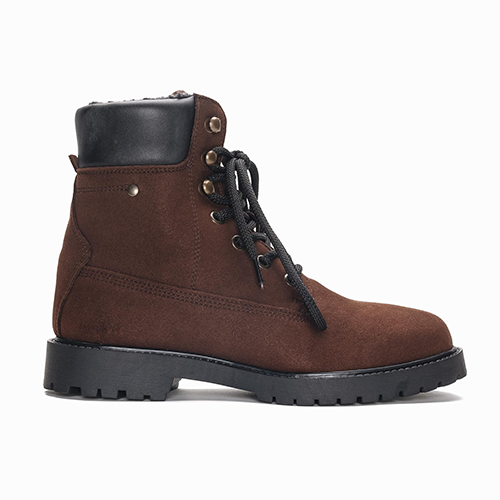 Boots
Boots  Dress shoes
Dress shoes  Hiking & Sports Shoes
Hiking & Sports Shoes  Slippers
Slippers  Loafers & mocassins
Loafers & mocassins  Flip flops & sandals
Flip flops & sandals 
 Backpacks
Backpacks  Shoulder bags
Shoulder bags  Cotton bags
Cotton bags  Toiletry bags
Toiletry bags 
.jpg) Hats & beanies
Hats & beanies  Watches
Watches  Belts
Belts  Wallets
Wallets  Ties & bow ties
Ties & bow ties  Sunglasses
Sunglasses  Key rings
Key rings 
 Bronzer
Bronzer  Concealer
Concealer  Powder
Powder  Blush
Blush  Highlighter
Highlighter 
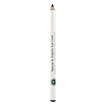 Eyeliner & eye pencil
Eyeliner & eye pencil  Eyeshadow
Eyeshadow 

 Lipstick
Lipstick  Lip liner
Lip liner 

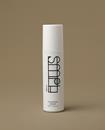 Face cleanser
Face cleanser  Toner
Toner  Exfoliants
Exfoliants  Serum
Serum  Moisturiser
Moisturiser  Eye cream
Eye cream  Face masks
Face masks  Face scrub
Face scrub  Lip balm
Lip balm 
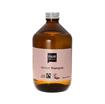 Shampoo
Shampoo  Conditioner
Conditioner  Hair care
Hair care 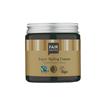 Hair styling
Hair styling 
 Hands & feet
Hands & feet 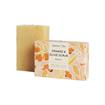 Shower
Shower  Body lotions, butters & oils
Body lotions, butters & oils  Deodorant
Deodorant  Oral care
Oral care 


.jpg) Candles & fragrance sticks
Candles & fragrance sticks .jpg) Vases & planters
Vases & planters  Lighting
Lighting .jpg) Cushions
Cushions  Other home decor
Other home decor .jpg) Furniture
Furniture 
 Tableware
Tableware .jpg) Kitchen tools
Kitchen tools .jpg) Storage jars
Storage jars 
 Bed sheets
Bed sheets  Duvet covers
Duvet covers  Throws & blankets
Throws & blankets  Pillow covers
Pillow covers 
 Cleaning
Cleaning 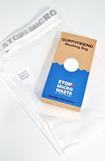 Laundry bags
Laundry bags .jpg)
.jpg)
.jpg) (Reusable) Notebooks
(Reusable) Notebooks  Pencil cases
Pencil cases .jpg)

 Clothing
Clothing  Shoes
Shoes  Bags
Bags  Accessories
Accessories  Toys
Toys 
 Clothing
Clothing  Accessories
Accessories  Toys
Toys 